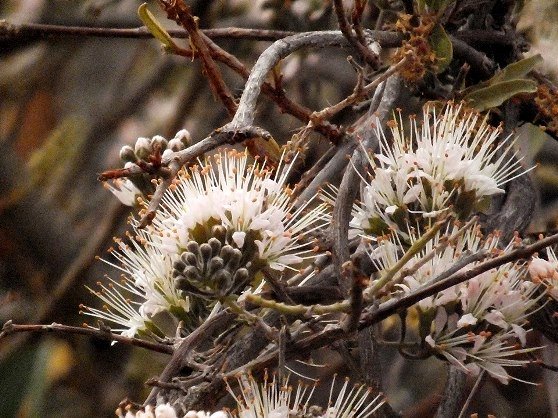Combretum mossambicense flowering

Author: Ivan Lätti
Photographer: Piet Grobler
Starting before the leaves on the deciduous Combretum mossambicense shrub, the numerous small flowers are borne in compact, head-like spikes. One or two spikes grow per leaf axil or the node where leaves had been. There are numerous nodes and axils, contributing significantly to the spring parade of their neighbourhood, spectacularly enhanced in years of favourable weather conditions.
The nearly globular spikes become 6 cm long and 4 cm wide, usually carried horizontally or facing sideways along the upper sides of long, trailing stems on about the last metre of the previous year’s growth. Some spikes may bear 60 flowers. The club-shaped, hairy buds in picture are grey and white-tipped, sometimes greenish.
Each flower is subtended by a leafy bracteole up to 5 mm long. It turns brown and is shed early. The open flowers spread five white or sometimes pink-tinged petals over five short, pointed, green sepals. The petals are spoon-shaped and slightly recurving, about 9 mm long and 4 mm wide.
Long filaments on the dense cluster of stamens protrude conspicuously above the corolla, ending in pink, orange, brick-red or red-purple anthers, only slightly longer than 1 mm. The anthers may protrude up to 22 mm above the sepal tips. The green, slightly tapering style protrudes about 12 mm above the sepal tips. The flowers are sweetly fragrant, but not always.
Flowering commences late in winter until spring, continuing when there are leaves present (Coates Palgrave, 2002; Schmidt, et al, 2002; Carr, 1988; iNaturalist).

